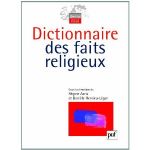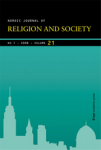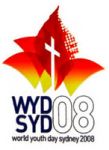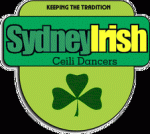 L'année 2010 se termine sur trois publications.
L'année 2010 se termine sur trois publications.
Jeunesse en Mission à Belleville. La première est parue dans un livre collectif dirigé par Lucine Endelstein, Sébastien Fath et Séverine Mathieu, Dieu change en ville. Religion, espace, immigration (voir le sommaire complet sur le site du réseau "sociologie & religions"). Elle porte sur l'église réformée de Belleville (photo ci-contre), qui est devenue au cours des années 1980 une sorte de quartier général de l'organisation évangélique Jeunesse en Mission (YWAM), "une église parisienne aux couleurs de YWAM" pour reprendre le titre du chapitre qui lui est consacré dans mon dernier livre. Dans le cadre d'une réflexion sur le rapport des courants évangéliques charismatiques au territoire urbain, elle reprend en partie des éléments évoqués dans un précédent article, déjà mentionné ici, sur "pentecôtisme et modernité urbaine". Voici les premières lignes de l'article, qui en donnent un bon aperçu:
"Au premier abord, l’église réformée de Belleville se présente comme une église locale dans un quartier multiculturel. En fait, son histoire récente, marquée par l’influence conjointe d’un pasteur anglican charismatique et de l’organisation évangélique Jeunesse en Mission (JEM), permet surtout d’analyser la manière dont les pratiques et l’imaginaire du protestantisme charismatique peuvent articuler réseaux globalisés et ancrage local, déterritorialisation des appartenances et réinvestissement symbolique de l’espace urbain."

Emotions en religion. La seconde publication fait partie d'un projet collectif de longue haleine, le dictionnaire des faits religieux dirigé par Régine Azria et Danièle Hervieu-Léger et évoque un thème déjà mentionné ici: les émotions en religion. J'y ai en effet écrit l'article "émotion", qui traite de la manière dont les sciences sociales ont abordé ces émotions religieuses: ma petite contribution à cet énorme travail - 1360 pages - que ses auteurs définissent ainsi:
Ce dictionnaire propose la première approche collective libre de toute emprise confessionnelle sur les faits religieux. Son objet, prétendu « indéfinissable », s’y trouve traité au cœur même de sa complexité à travers la pluridisciplinarité de ses contributeurs dialoguant par dessus les frontières disciplinaires et culturelles : sociologues, anthropologues, historiens, philosophes, politologues conversent autant sur l’enracinement ou l’exportation des religions que sur des sujets que tout un chacun se pose (secte, intégrisme…), afin d’aider le lecteur à se configurer sa définition des faits religieux.
 Bourdieu et le pentecôtisme. Enfin, la troisième publication, davantage destinée à un public de spécialistes, est parue dans un récent numéro du Nordic Journal of Religion and Society (sommaire ici). Elle présente une synthèse théorique de mes recherches sur la socialisation et l'institution pentecôtistes, en montrant comment les outils de la sociologie de Pierre Bourdieu pourraient être utilement utilisés pour analyser les relations entre individu, institution et communauté dans ce type d'église. En voici un résumé:
Bourdieu et le pentecôtisme. Enfin, la troisième publication, davantage destinée à un public de spécialistes, est parue dans un récent numéro du Nordic Journal of Religion and Society (sommaire ici). Elle présente une synthèse théorique de mes recherches sur la socialisation et l'institution pentecôtistes, en montrant comment les outils de la sociologie de Pierre Bourdieu pourraient être utilement utilisés pour analyser les relations entre individu, institution et communauté dans ce type d'église. En voici un résumé:
The Holy Spirit and the Pentecostal habitus: Elements for a sociology of institution in classical Pentecostalism
Classical Pentecostalism is placed in line with contemporary reshaping of institutional authority as it provides a subjective individualisation of religious experience («a personal relationship with God») while maintaining a close control of converts’ lives. This article draws from fieldwork conducted within the French Polynesian Assemblies of God since 2000. The aim here is to show how the theoretical tools of Bourdieu’s sociology can prove helpful in analysing this paradoxical institution that is both an «anti-structure» and a structuring authority which grants the biographical invention of conversion the status of a well-grounded illusion. It first analyses the structure in the Pentecostal field of minister’s positions, then the distribution of lay «ministries» and the institutional apparatus of socialisation and training that give shape to a Pentecostal habitus. The «voice of the Holy Spirit» finally appears as the symbolical core of this specific habitus which lies on an «invisible» mediation between institutional apparatus of control and internalised dispositions.
* Bonus (ajout du 7 janvier 2010). Je viens de mettre en ligne sur le serveur HAL-SHS le texte d'une communication faite au congrès de l'association française de sociologie en avril 2009, sur le thème "Le système pentecôtiste de gestion de l'argent, entre illusion subjective et rationalité institutionnelle". Pour le lire, cliquez ici.
Bonnes lectures !
 The next
The next 
 during the WYD celebrations to a plenary indulgence; confessional booths are being set up around the city (despite the fact that, until recently pressured by Rome to restore the traditional confessional, Australian Catholics had scarcely used it, preferring the collective 'third rite' confession during Mass). I expect that the event will attract young Catholics, particularly those of a traditionalist mind-set, but it seems to have been designed more as an event for reinforcing Catholic identity than as an attempt to attract the unconverted.
during the WYD celebrations to a plenary indulgence; confessional booths are being set up around the city (despite the fact that, until recently pressured by Rome to restore the traditional confessional, Australian Catholics had scarcely used it, preferring the collective 'third rite' confession during Mass). I expect that the event will attract young Catholics, particularly those of a traditionalist mind-set, but it seems to have been designed more as an event for reinforcing Catholic identity than as an attempt to attract the unconverted. of government money supporting it; roads will be blocked and Sydney's already overstretched public transport system will be even more strained; city office workers have been asked to take the week off work if possible so as to minimise overcrowding; special laws impose a A$5000 fine for "causing annoyance" to WYD pariticipants; police have said that anyone participating in a protest (eg groups representing survivors of clergy sexual abuse) will have to have their placards and messages approved beforehand. All this has contributed to public cynicism and irritation.
of government money supporting it; roads will be blocked and Sydney's already overstretched public transport system will be even more strained; city office workers have been asked to take the week off work if possible so as to minimise overcrowding; special laws impose a A$5000 fine for "causing annoyance" to WYD pariticipants; police have said that anyone participating in a protest (eg groups representing survivors of clergy sexual abuse) will have to have their placards and messages approved beforehand. All this has contributed to public cynicism and irritation. Australian Catholics are predominantly made up of three waves of migrants: first, poor Irish workers and convicts, and the clergy and religious who came to look after them; then, after World War II, southern European (especially Italian) workers; and, most recently, Catholics from Vietnam and other Asian countries.
Australian Catholics are predominantly made up of three waves of migrants: first, poor Irish workers and convicts, and the clergy and religious who came to look after them; then, after World War II, southern European (especially Italian) workers; and, most recently, Catholics from Vietnam and other Asian countries. However, Australia's most senior Catholic, Cardinal George Pell, is generally regarded as conservative, particularly on theological issues but also on social issues. Also, different parts of the Catholic church have different political flavours. Some of the most prominent liberal voices represent religious orders rather than the church hierarchy, for example.
However, Australia's most senior Catholic, Cardinal George Pell, is generally regarded as conservative, particularly on theological issues but also on social issues. Also, different parts of the Catholic church have different political flavours. Some of the most prominent liberal voices represent religious orders rather than the church hierarchy, for example.